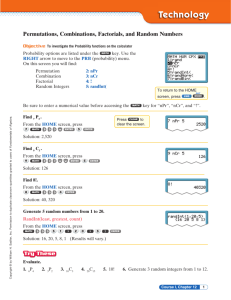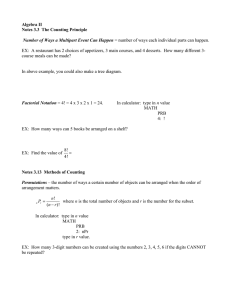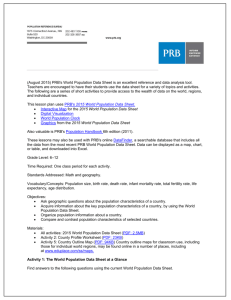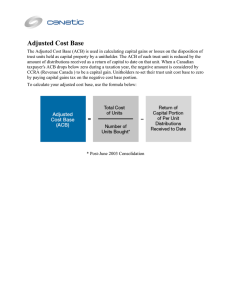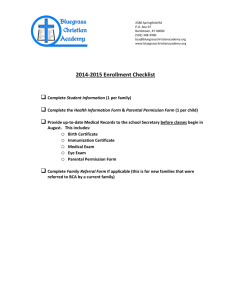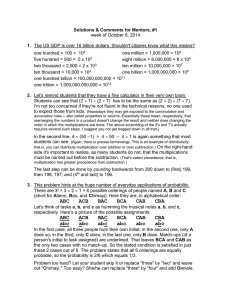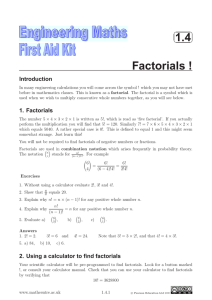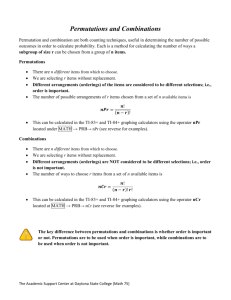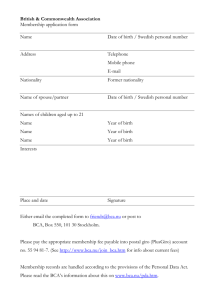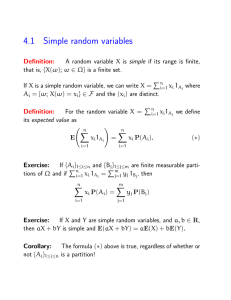A Primer on Factorials and Combination Numbers n! = (n)(n
advertisement
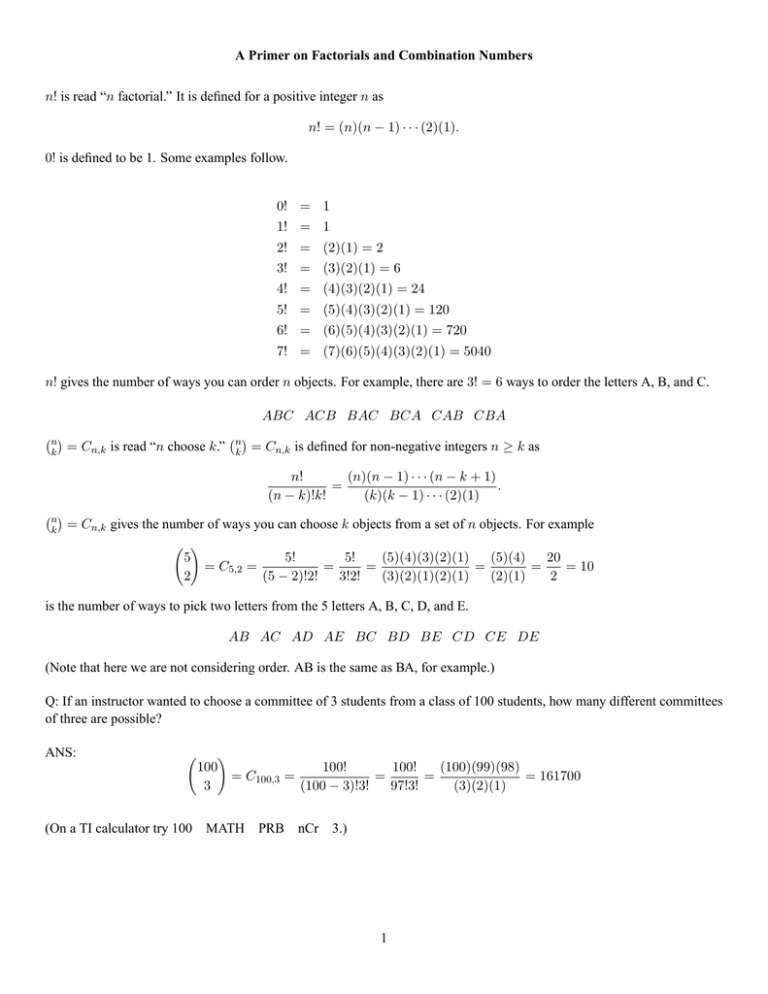
A Primer on Factorials and Combination Numbers n! is read “n factorial.” It is defined for a positive integer n as n! = (n)(n − 1) · · · (2)(1). 0! is defined to be 1. Some examples follow. 0! = 1 1! = 1 2! = (2)(1) = 2 3! = (3)(2)(1) = 6 4! = (4)(3)(2)(1) = 24 5! = (5)(4)(3)(2)(1) = 120 6! = (6)(5)(4)(3)(2)(1) = 720 7! = (7)(6)(5)(4)(3)(2)(1) = 5040 n! gives the number of ways you can order n objects. For example, there are 3! = 6 ways to order the letters A, B, and C. ABC ACB BAC BCA CAB CBA n k = Cn,k is read “n choose k.” n k = Cn,k is defined for non-negative integers n ≥ k as (n)(n − 1) · · · (n − k + 1) n! = . (n − k)!k! (k)(k − 1) · · · (2)(1) n k = Cn,k gives the number of ways you can choose k objects from a set of n objects. For example ! 5 2 = C5,2 = 5! 5! (5)(4)(3)(2)(1) (5)(4) 20 = = = = = 10 (5 − 2)!2! 3!2! (3)(2)(1)(2)(1) (2)(1) 2 is the number of ways to pick two letters from the 5 letters A, B, C, D, and E. AB AC AD AE BC BD BE CD CE DE (Note that here we are not considering order. AB is the same as BA, for example.) Q: If an instructor wanted to choose a committee of 3 students from a class of 100 students, how many different committees of three are possible? ANS: ! 100 3 (On a TI calculator try 100 = C100,3 = MATH PRB 100! 100! (100)(99)(98) = = = 161700 (100 − 3)!3! 97!3! (3)(2)(1) nCr 3.) 1
